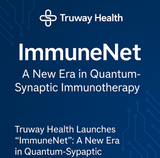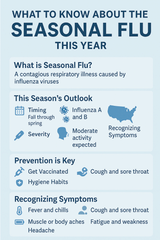The Journey of a Medical Product: From Manufacturer to End-User
The Journey of a Medical Product: From Manufacturer to End-User
Every medical product, from the simplest bandage to the most sophisticated MRI machine, has a story. Its journey, from conceptualization to the hands of the end-user, is a testament to human ingenuity, stringent testing, and rigorous quality controls. Let's explore this journey step by step.
1. Concept and Design
Every product begins as an idea. Medical engineers and professionals identify a need within the healthcare industry. Maybe it's a more efficient way to deliver medication, or perhaps a machine that gives clearer imaging. Once the need is established, a design phase begins where blueprints and prototypes are made.
2. Research and Development
With a prototype in hand, the product enters the R&D phase. Here, improvements are made, ensuring the product is both safe and effective. This might involve tinkering with materials, sizes, shapes, or technologies until the optimal version is realized.
3. Clinical Trials and Testing
Before any medical product reaches the market, it undergoes rigorous testing. This process ensures that it's safe for its intended use. Products may undergo multiple rounds of clinical trials, with each stage designed to test different aspects, such as safety, efficacy, and side effects.
4. Regulation and Approval
Regulatory bodies like the FDA (or its international counterparts) review the results of these tests. Only when they're satisfied that the product meets all safety and effectiveness standards will they give the green light. This approval is a significant milestone, assuring patients and professionals of the product's reliability.
5. Manufacturing
Once approved, mass production begins. Manufacturing plants, often equipped with cutting-edge machinery, start producing the product at scale. Stringent quality controls are in place, ensuring every unit meets the set standards.
6. Packaging and Labeling
The next phase ensures the product remains safe and uncontaminated during shipping and storage. Packaging is not only about protection but also about providing vital information. Labels carry instructions, expiration dates, and other essential details.
7. Distribution
Distributors, like our very own e-commerce platform, step in at this stage. We source the products from manufacturers, storing them in specialized warehouses. Our role ensures that whether a hospital in New York or a clinic in Texas needs the product, it's readily available.
8. End-User Adoption
The journey concludes when a healthcare professional or patient uses the product. However, support doesn't end here. Manufacturers and distributors often provide after-sales services, training, and resources to ensure the product's optimal use.
In Conclusion: A Symphony of Collaboration
The journey of a medical product is complex, demanding the expertise of countless professionals. It's a dance of science, innovation, regulation, and distribution. Every stage is crucial, ensuring that by the time the product reaches its end-user, it's not only effective but safe.
By understanding this journey, we appreciate the tremendous effort behind every product in our medical kit. It reinforces the importance of choosing reputable suppliers and the value of regulatory bodies in maintaining industry standards.
Truway Health News & Insights
Breathe, Refuel, Recharge: Finding Your Daily Balance
Written by Perry JohanssenPublished and Edited by Truway Health Life rarely slows down on its own. B...
Truway Health Launches “ImmuneNet”: A New Era in Quantum-Synaptic Immunotherapy
Reimagining How Immunity Can Be Understood and Guided At Truway Health, innovation never sleeps.Toda...
Announcing the HEALTH Trial: Humanoid Evaluation and Learning in Healthcare
Published by Truway Health, Inc.Principal Investigator: Gavin SolomonClinicalTrials.gov Identifier:...
We’re thrilled to launch our first-ever clinical trial of TruDxPc
Study Identification Protocol ID: TRHW-DX-001 Brief Title: Truway Diagnostic Tools in Primary Ca...
What to Know About the Seasonal Flu This Year
As cooler weather sets in, flu season returns. Each year brings new strains, evolving guidance, and...
Gamification and Health: Turning Wellness Into a Daily Game
Introduction For many people, staying healthy feels like a chore: eating clean, exercising regularly...







